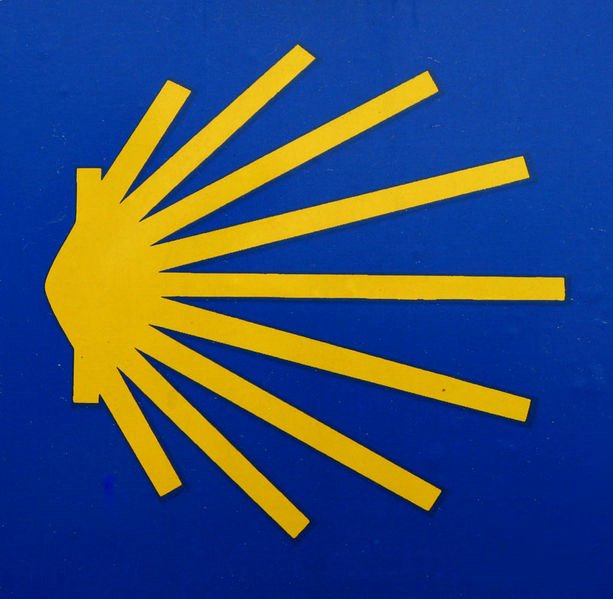Córdoba
Sitting in the Plaza de la Corredera on a cool Spanish evening and having just devoured a local meal called ¨flamancillo,¨ I sighed and realized that I am just about the luckiest guy currently not in the Dallas/Ft. Worth Metroplex. I decided I´d better walk over to the cafe with the internet connection and try to explain why.
In the past two days, I´ve run all over Cordova, this UNESCO World Heritage City. I arrived about noon and found a beautiful little hostella in the old Jewish quarter of the city. My second-floor room actually has a patio with a low, wrought-iron grate ($38 a night). I sat for a few minutes to catch my breath, then ran to the nearest monument--the Mezquita Cathedral. I should stop being surprised at seeing history on history in Spain, but this mosque/church astounds. It was the site of a Roman temple--archeologists don´t know to which god; then, it became the Church of St. Vincent around 450AD (archeological remnants were in a museum), perhaps simply using part of a converted Roman basilica as part of its structure. In the mid-8th century, the Moors conquer Cordoba, and decide to build a mosque on the site--and did they build. The Mezquita mosque was the largest such structure in Europe. More than its size, its construction makes it dazzling. It has the usual tower for the call to prayer, and the beautiful ablution yard with fountains for washing, but the interior of the covered prayer hall overwhelms on entrance. Aside from simply being caverous, its ceiling is held up on more than a hundred double-columned, two-tiered arches. Moreover, the arches are striped in white and red--the builders used alternating bands of white stone and red brick to construct the zebra-like arches. Did I say it was amazing? However, in the 1230´s the Christian King Fernando III (¨the Saint¨) took Cordoba. Amid controversy then and now, the Catholic Church decided in 1509 to build a cathedral right in the middle of the mosque. It took 150 more years, and the result is a cacophony of style. You´re walking through this mosque with striped arched, and suddenly, there´s a baroque cathedral. Additionally, the original enclaves for prayer have been filled over the years with special chapels dedicated to specific saints or used as burial crypts. Walking the area, inside and out, took more than four hours--curious with its shifting styles, but colossal in size.
Today is Friday, and on Fridays in Cordoba, entrance to most museums and monuments is free, so I ducked back into the Mezquita Cathedral, for one last look, and then went on the the Alcazar de el Reyes Christianos--the Castle of the Christian Kings. Built in the 1200s, it was Fernando´s lauching point for an assault on Granada; later, it served as the site where Columbus received his final instructions from Isabella and Ferdinand. Inside the reception hall, the kings had collected Roman floor mosaics for display. They were easily the most beautiful and detailed I´ve seen since the Pompeii exhibit. The defensive wall that extends from the castle still encompasses about a fifth of the city. I also visited the archeological museum (lots of great glass, pottery, and brass items from the Moorish era) and the Museum of Art. Housed in a 16th-century ducal palace, it was really a treat just to walk around inside, but the 18th through 20th-century art added a bit--several nice Goyas (I´m going to be an expert on Spanish art when I return).
Late this afternoon, I took the special bus seven miles outside Cordoba to visit the still-active archeological site called Medina Al´Zahara. In 974, the local Caliph decided to build a palace and a small city to support his staff some distance from the city of Cordoba. His reasons for doing so are still debated. A later Capiph abandoned the city about 1017. For nearly a thousand years, the city disappeared, though some documents mentioned its existance and tantalized historians. Finally, about 50 years ago, the Medina came to light; it was a treat to be allowed to walk around this giant jig-saw puzzle. In some places, archeologists had laid out thousands of fragments of plaster-work or other wall art or floor patterns. There had been a palace, a royal residence, guard quarters, servants area, reception hall--and all of the pieces aren´t together yet. Evening was just falling as the last shuttle bus took me reluctantly from this site.
Have I mentioned this lately--I´m the luckiest guy not in Dalla/Ft. Worth. Thanks Tarrant County College. I´m receiving an education and compiling a photo log that will benefit me and my students for years.
p.s. ¨Flamancillo¨: first, the waiter brings out hard, twice-baked sesamee bread and pickled, green olives. Then, the main course appears--bread, ham rolled into a sausage, breaded, and deep fried in olive oil, salad, and fried eggplant and squash. For desert, bread pudding covered in cold tomato sauce topped with half a boiled egg. I´m absolutely serious.


2 Comments:
Your day sounded glorious, until you mentioned dinner. I won't tell you about the grilled cheese s/wich we had for lunch.Doesn't sound like there are enough hrs. in the day to see all there is to see.Your posts are full of excitment.Viva Jerry!! BC/LFC
Don't forget to check out the total lunar eclipse tonight. You'll have a much more spectacular view than we will in Texas. Take care!
Post a Comment
<< Home